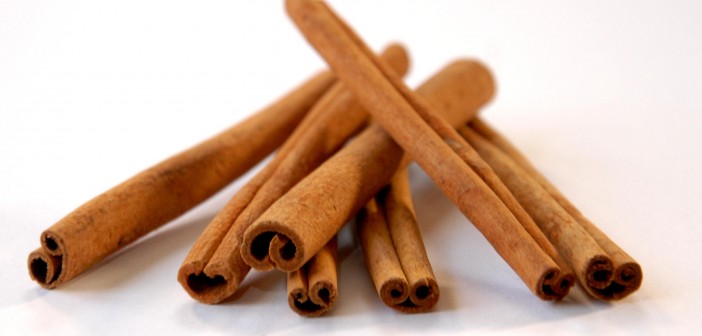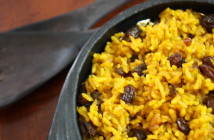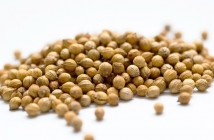Cinnamon is one of the oldest known spices. There are two main types of cinnamon: True cinnamon or Ceylon cinnamon, which originates from Sri Lanka; and Cassia or Chinese cinnamon, which originates from southern Asia. Both are harvested from the inner bark of a tropical evergreen tree related to the laurel (bay leaf) family. The bark can be found ground or in whole quills or sticks. Cassia is the more commonly used of the two spices. Most of the cinnamon sold in the United States is Cassia. Multiple studies have demonstrated that cinnamon intake may balance blood sugar by reducing insulin resistance in people with type 2 diabetes. Just as little as half teaspoon of cinnamon can lower blood sugar levels and prevent blood sugar spikes after meal.
Tastes and Aroma
The flavor is sweet, warm, and pleasantly woody. Ceylon Cinnamon is more complex, subtler, and citrusy than Cassia cinnamon, but less sweet and pungent.
Pairing Spices
Allspice, cardamom, chili, cloves, coriander, cumin, ginger, nutmeg, star anise, tamarind, and turmeric.
Complements
Complements well with apples, bananas, blue berries, pears, oranges, pears, stewed fruits, preserved lemons, pickles, pecans, chocolate, cocoa, coffee, tea, hot beverage, mulled wine, cakes, pastries, custards, desserts, chicken, lamb, esp. braised, pork, rice, sugar, pudding, vanilla.
Culinary Uses
Cinnamon Recipes
Cuisines: Mexican, Middle Eastern, Moroccan, Indian, Southeast Asian, South American.
With its distinctive and pleasant taste and aroma, cinnamon is often used in baked desserts, such as donuts, apple strudel and muffins. Whole cinnamon is used in simmered dishes where the flavor can be gently infused. Cinnamon sticks work well to flavor broths, ciders, hot drinks and mulled wine. Cinnamon also appears in classic sweet-savory spice mixes such as garam masala and Chinese five-spice powder in Asia. European cooks tend to use, cinnamon in dessert dishes, while those in the Middle East enjoy it in sweet-sour stews and Moroccan Tagine.
Buying and Storing
There are three main grades of cinnamon. Cinnamon bark is the lowest with dark brown, slightly bitter powder. Ground cassia is the middle grade, while cinnamon quills are the top grade of Ceylon cinnamon. The paler the color of the cinnamon, the better the grade. Good-quality cinnamon sticks are an even, light-brown color, and blemish free. Since whole cinnamon is difficult to grind yourself, keeping powdered cinnamon on hand is recommended. Buy ground cinnamon only in small quantity as it loses its flavor quickly. Cinnamon quills stay fresh for up to 3 years if stored in an airtight container.
Most of the cinnamon sold in the United States is actually Cassia. Ceylon cinnamon sticks and powder can be purchased from reputable spice stores or online.
Organic Powdered Ceylon Cinnamon
Organic Ceylon Cinnamon Sticks
Premixed spice mixtures can also be conveniently purchased from online or specialty stores:
Cinnamon Health Benefits
Cinnamon is known to reduce risks associated with diabetes and cardiovascular disease by:
- Reducing blood sugar and lipid levels
- Lowering LDL (“bad”) cholesterol and triglyceride levels
- Improving insulin resistance
- Helping to improve metabolic syndrome and decrease body fat
Medical benefits of cinnamon are not limited to diabetes or prediabetes. Cinnamon can also benefit healthy people by improving insulin sensitivity and helping the body to process and store glucose. It can also fight Candida albicans which cause most cases of vaginal yeast infections, preserve food to prevent food poisoning, and reduce inflammation.
Side Effects:
Cinnamon contains coumarin, a fragrant chemical that can result in liver damage if consuming large amounts. Ceylon cinnamon has substantially lower amount of coumarin than Cassia cinnamon. If you plan to consume cinnamon on a regular basis, Ceylon cinnamon
is recommended.






